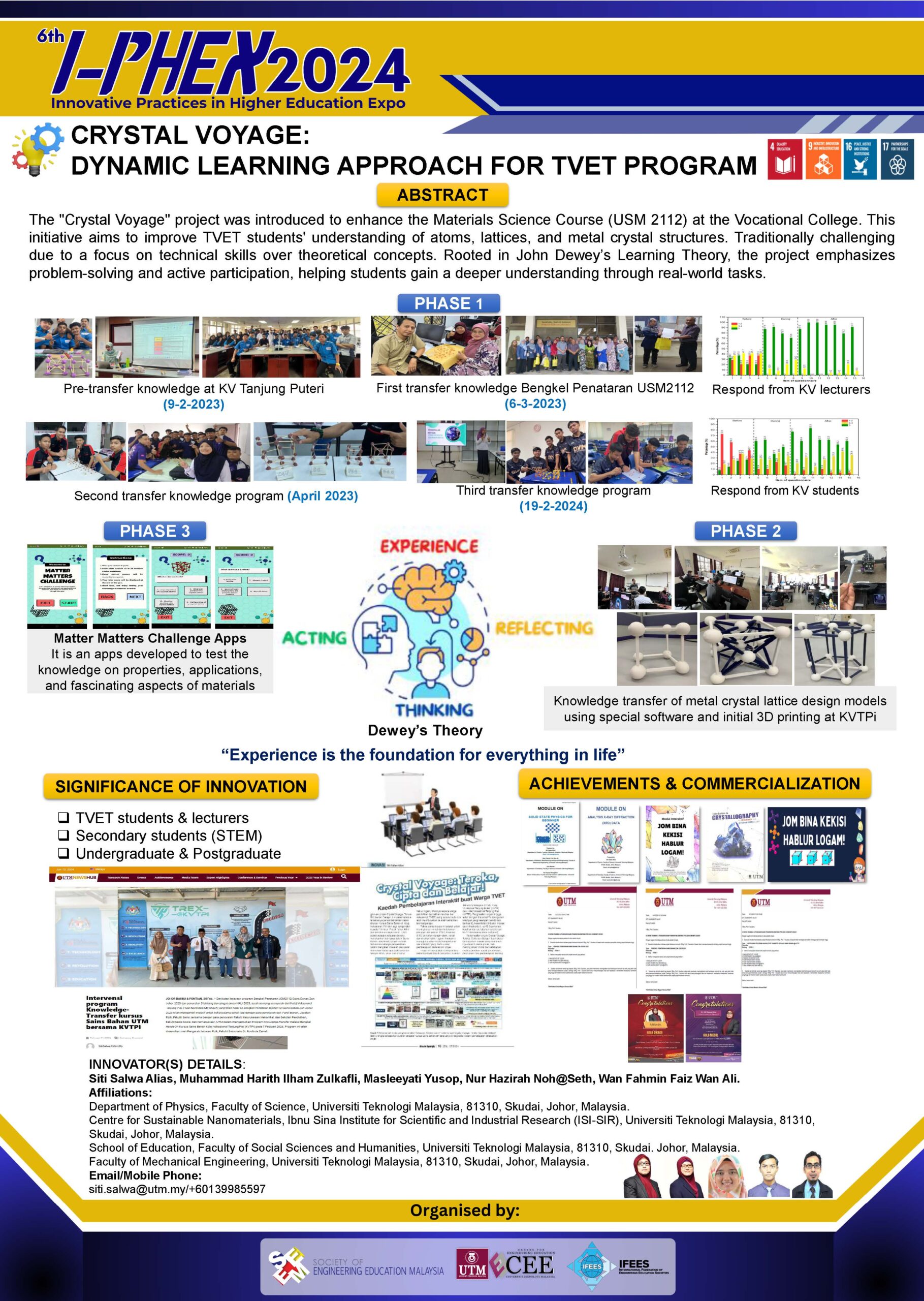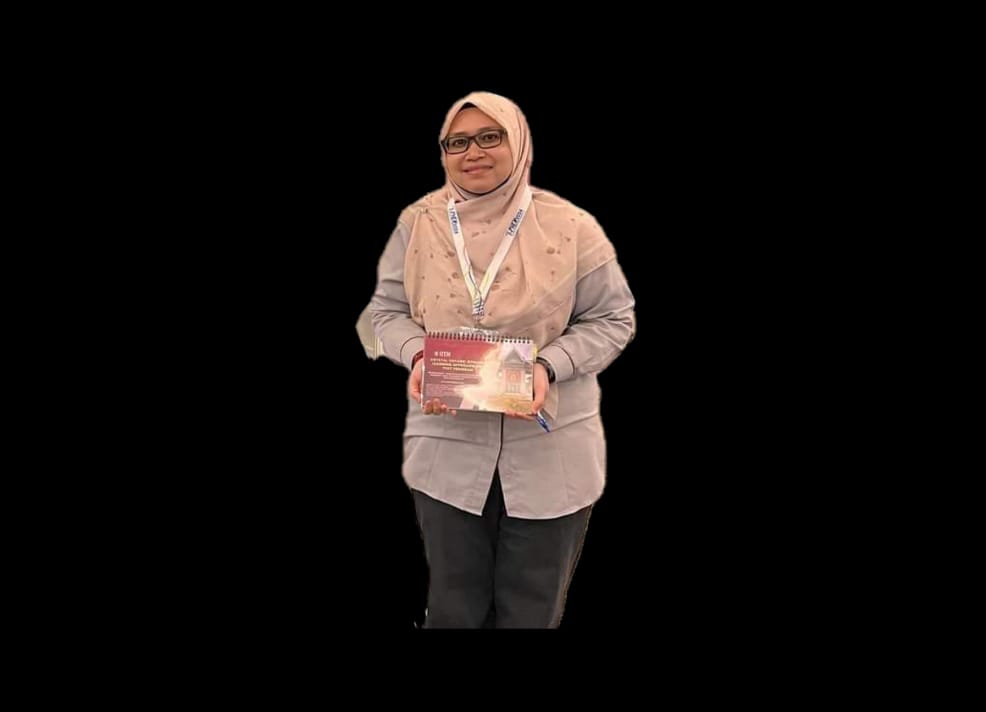The “Crystal Voyage” project is an innovative dynamic learning approach designed for TVET (Technical and Vocational Education and Training) programs, specifically tailored to enhance the understanding of materials science among students. This project was introduced in the Materials Science Course (USM 2112) at the Vocational College, aiming to bridge the gap in students’ comprehension of atomic structures, lattices, and metal crystal structures. Traditionally, these concepts are challenging due to their theoretical nature, but “Crystal Voyage” seeks to make them more accessible through a focus on technical and practical skills.
Rooted in John Dewey’s Learning Theory, the project follows a learning cycle of “Experiencing,” “Reflecting,” “Thinking,” and “Acting.” By emphasizing hands-on tasks, problem-solving, and active participation, students are encouraged to grasp complex concepts more effectively through real-world applications.
The project is divided into three phases:
-
Phase 1 involved initial knowledge transfer sessions, including pre-transfer training at KV Tanjung Puteri, workshops, and feedback sessions with both lecturers and students. These sessions aimed to set the foundation for understanding and allow for immediate responses and adjustments to the teaching methods.
-
Phase 2 focused on applying the knowledge through the creation of 3D metal crystal lattice design models. Using special software and 3D printing technology, students gained practical insights into the structures they studied, reinforcing their theoretical knowledge with tangible models.
-
Phase 3 introduced the “Matter Matters Challenge Apps,” an interactive application that tests users’ knowledge on the properties, applications, and interesting aspects of materials. This phase encourages further engagement and self-assessment, allowing students to reinforce their understanding interactively.
The significance of this innovation spans multiple educational levels, targeting not only TVET students and lecturers but also secondary STEM students and university undergraduates and postgraduates. The outcomes of the project include various achievements and commercialization efforts, showcasing its impact and potential scalability across different learning environments.
The project was spearheaded by a team from Universiti Teknologi Malaysia, including Siti Salwa Alias, Muhammad Harith Ilham Zulkafli, Masleeyati Yusop, Nur Hazirah Noh@Seth, and Wan Fahmin Faiz Wan Ali. They collaborated across departments and leveraged their diverse expertise to bring this concept to fruition. This work highlights the role of experiential learning in higher education and its potential to enhance student engagement and comprehension in technical fields.


Dr. Siti Salwa Alias, a researcher at Universiti Teknologi Malaysia (UTM), has made significant contributions to nanomaterials and materials science. Her expertise spans synthesizing ZnO nanoparticles and developing gel polymer electrolytes for energy applications, such as photoelectrochemical cells. Currently, her research explores advanced nanomaterials for structural applications, proton battery membranes, and water treatment. Known for her interdisciplinary approach, Dr. Siti Salwa integrates her scientific pursuits with a commitment to sustainable technological solutions. Beyond academia, she enjoys running, cycling, gardening, and reading.
For more, visit her profile here.
